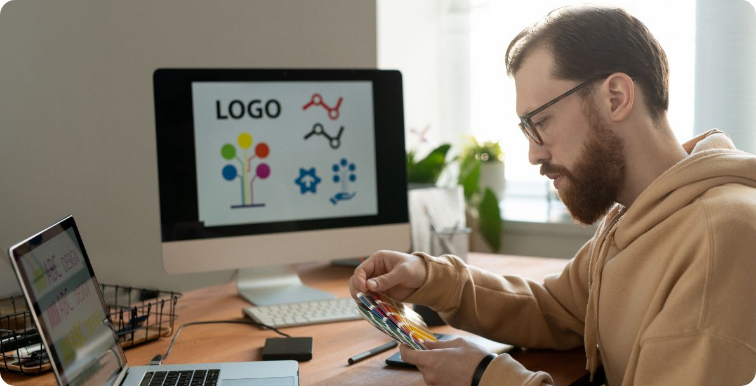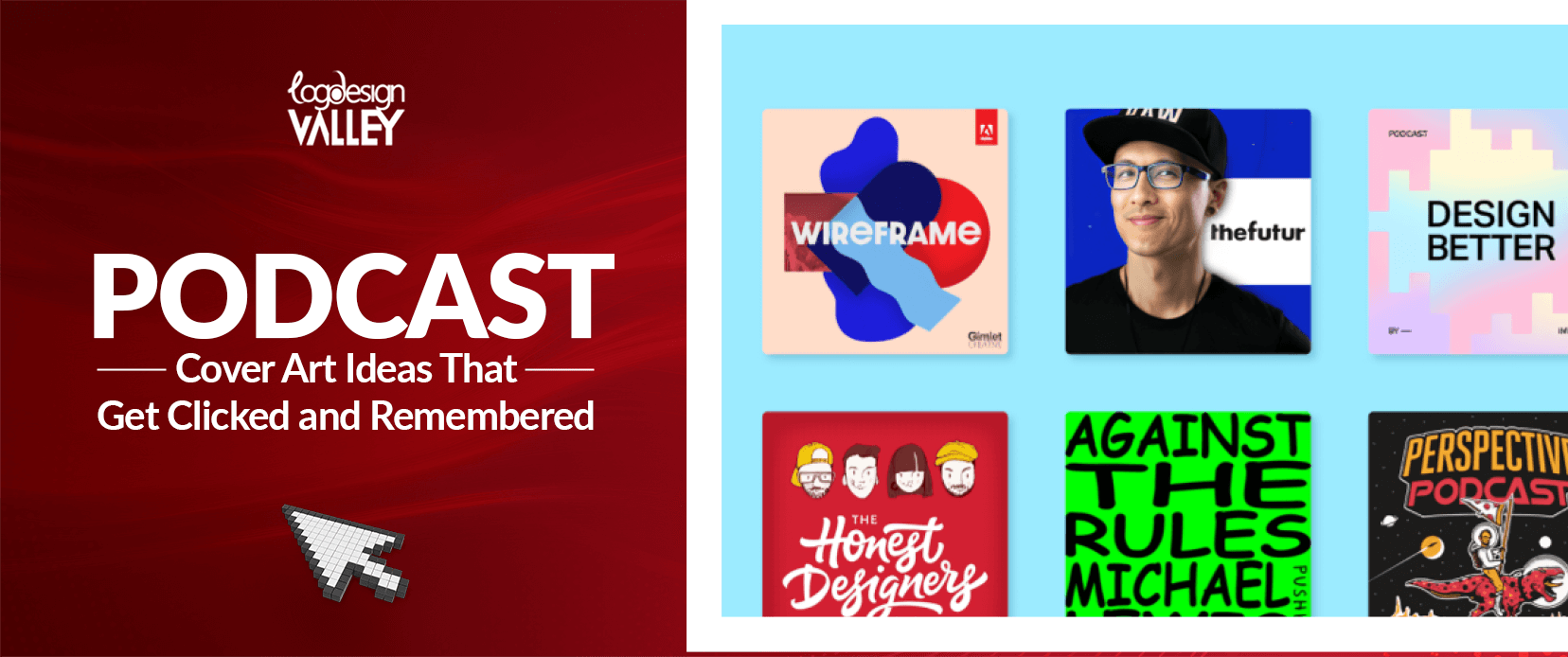In this article, step into the captivating realm where design meets psychology. Uncover the subtle yet powerful influences that shape our perceptions of brands as we explore the strategic choices and subconscious triggers embedded in iconic logos. Join us on a journey through the fascinating interplay of design elements and consumer psychology, revealing the hidden stories behind the world’s most memorable logos.
In the vast landscape of visual communication, logos serve as the silent ambassadors of brands, conveying messages far beyond their aesthetic appeal. Behind the lines, colors, and shapes lies a fascinating realm of psychology influencing consumer perceptions and emotions. This article embarks on a journey to unravel the intricacies of why certain logos resonate deeply with audiences, exploring the deliberate choices made by designers to leave a lasting imprint on the minds of consumers. Join us as we delve into the subconscious triggers, cultural nuances, and strategic decisions that transform a simple emblem into a powerful symbol of identity and trust. Welcome to the captivating world where design meets psychology, shaping the visual language that defines the brands we know and love.
Logo Design Psychology
A logo transcends mere graphic representation. It serves as the embodiment of a brand, wielding a substantial influence on how a business is perceived by its audience. This exploration delves into the intricate psychological principles underpinning the crafting of a successful logo and its profound impact on consumer behavior. From the nuanced application of color theory to the intricacies of shape psychology, we will navigate through diverse factors that collectively contribute to a logo’s effectiveness, thereby aiding in the establishment of a brand’s distinctive identity.
Beyond the visual components, the psychology of logo design extends to a comprehensive understanding of the contextual landscape in which the logo will exist. This involves a keen awareness of the target audience, industry dynamics, and the core values of the company. The thoughtful consideration of these multifaceted factors plays a pivotal role in the creation of a logo that not only visually resonates but also effectively communicates the intended message.
Influence of Color In Logo Design
The color stands as a pivotal element in logo design, wielding the ability to evoke diverse emotions and instantly shape perceptions of a company or product. The selection of colors carries profound psychological implications, with each hue conveying distinct meanings. Designers, when choosing colors for a logo, must meticulously weigh factors such as the target audience, the nature of the product or service, and the overarching message the logo intends to communicate. Furthermore, the interplay between colors demands consideration, with red signifying energy and excitement, blue exuding trustworthiness, and combinations like yellow and blue fostering a cheerful ambiance. The strategic use of colors not only leaves a strong and enduring impression on consumers but also plays a crucial role in establishing the desired tone. Be it vibrant and modern with bold hues or sophisticated and trustworthy with muted, subtle shades.
Impact of Symbolism and Shape On Logo Design
Shape and symbolism constitute integral aspects of logo design, wielding the power to establish the ambiance and convey the essence of a brand’s message. When observing a logo, the initial elements to capture attention are its shape and symbolic representations. The chosen shape frequently serves as a visual descriptor of a brand’s objectives, values, and mission, providing insights into its personality and the desired customer perception. Consider, for instance, a logo characterized by a robust, geometric shape, imparting an impression of reliability and security. Conversely, a logo adorned with a more organic form conveys an approachable and friendly brand image. In essence, the interplay of shape and symbolism is a pivotal means through which logos communicate and resonate with their audience.
Symbols play a vital role in logo design, serving as powerful representations of a brand’s values and mission. Frequently, logos incorporate common symbols like animals, plants, or objects to convey specific messages. For instance, a company focused on outdoor activities might use a bear as a symbol of strength and courage. In contrast, an environmental protection company may opt for a plant to symbolize sustainability and growth.
Influence of Typography On Logo Design
Typography serves as a crucial element in logo design, playing a pivotal role in conveying messages to viewers. It encompasses the style and appearance of text, offering a means to express a brand’s personality and values. When wielded effectively, typography becomes a potent tool for message communication and the establishment of a robust visual identity. Utilizing bold or distinctive font styles can make a logo stand out, while the choice of typography can reflect a company’s core values and mission. For instance, a company aiming for a friendly or playful image might opt for a creative or rounded font. Additionally, the visual appeal of a logo is enhanced by selecting an aesthetically pleasing font, contributing to increased memorability. Careful consideration of font color further ensures that the logo remains distinctive and memorable amidst the crowd.
Impact of Simplicity On Logo Design
In the realm of logo design, simplicity stands as the fundamental principle. A logo should possess qualities of memorability, recognizability, and timelessness. Its purpose is to effectively communicate the essence of the business in a clear and easily comprehensible manner. Simplicity not only aids potential customers in remembering the logo but also facilitates versatile usage across various applications. The adaptability of a simple logo allows it to evolve seamlessly with the growth of the business. In contrast, overly complex logos may swiftly appear outdated, while a simple design retains relevance and endurance over the years.
Brand Recognition and Logo Design
A well-crafted logo aims to be both memorable and timeless, encapsulating the essence and message of a brand within a singular image. Striking a balance between distinctiveness and simplicity is crucial for effective design and easy recall. The logo should exhibit versatility, seamlessly adapting to diverse media while also evoking feelings of trust, loyalty, and familiarity. Establishing an emotional connection with customers is paramount, fostering a lasting impression that aids in brand recall and recognition in subsequent encounters.
Influence of Negative Space In Logo Design
Negative space plays a pivotal role in logo design as the empty areas between logo elements contribute significantly to a more impactful and practical design. This space can be strategically employed to establish balance, facilitate visual flow, and emphasize specific elements within the logo. Furthermore, negative space serves as a powerful tool to create visual effects that set a logo apart from its competitors. By incorporating negative space thoughtfully, a logo can evoke a sense of harmony, guiding the viewer’s attention to critical elements and enhancing overall comprehension. Moreover, the utilization of negative space can introduce a dynamic quality to a logo, creating a visual path that enhances engagement and imbues the design with a sense of motion.
Influence of Testing Logo Design
Selecting the optimal colors, fonts, and shapes for your logo is crucial, and the most effective method of doing so is through logo testing with Poll the People. Assessing your logo’s impact and influence by presenting it to your target audience offers insights into their perceptions and helps identify what design elements resonate. Poll the People provides the flexibility to tailor questions and design tests for valuable feedback. With expert-crafted templates, a dedicated user panel, and a user-friendly results dashboard, our platform facilitates the testing of multiple logos, allowing you to discern which elements are practical and which may need adjustment.
In conclusion, delving into the intricate interplay of psychology and design reveals the profound impact that logos wield as silent communicators of a brand’s identity. Beyond their aesthetic allure, logos serve as powerful vessels of emotion, perception, and message. The exploration of color psychology, shape symbolism, and the strategic use of typography unveils the artistry involved in crafting a logo that transcends mere visuals, becoming a visual language that resonates with the audience. As we navigate the diverse elements that contribute to a logo’s effectiveness, it becomes evident that the fusion of creativity and psychology creates an enduring imprint on the minds of consumers. This blog underscores the significance of thoughtful logo design choices, illustrating that behind every compelling logo lies a carefully curated narrative that speaks volumes about the brand it represents.






